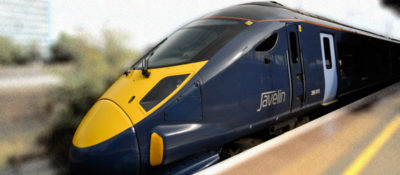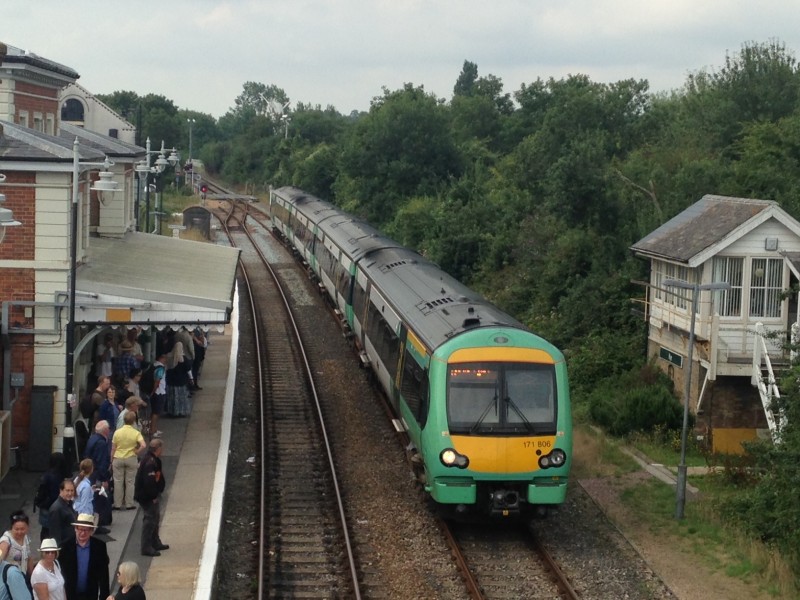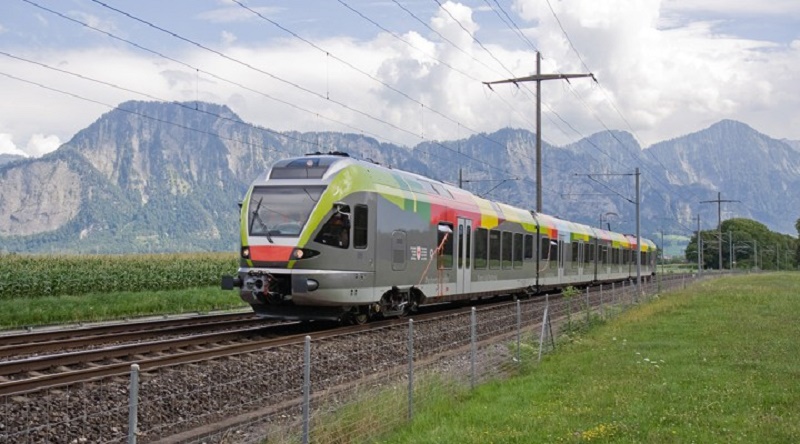There was a lot of information provided to attendees of this year’s MarshLink Action Group Annual General Meeting, some rather technical and some requiring considerable faith in a futuristic-sounding plan being put in place.
Firstly, Martin Grier, Head of Drivers, Southern Railway provided less futuristic information with an update on the problems Southern has encountered over the last year, in particular the enormous issue of the redevelopment of London Bridge Station (the worst now over but not expected to be completed until 2018) and a landslide at Glynde (expected to be resolved within a few weeks after having cut short the Ashford – Brighton route). There were many questions raised by members about current service issues, in particular the connections at Ashford, the need for a later train (and more, but all of them included in MLAG’s current issues with Southern): Mr. Grier said he would report back to MLAG on these questions but since they are issues MLAG has a continuing (if very slowly developing) dialogue with Southern about, early acceptable answers should not be anticipated. Mr. Grier was thanked for his input and MLAG looks forward to maintaining a productive relationship with him and with Southern.

The focus of the meeting then turned to the future and the potential Javelin direct service to London stopping at Rye, Hastings and Bexhill, first aired at the MLAG AGM two years ago by Network Rail and Amber Rudd MP. Since then, Ms. Rudd has established the High Speed Rail Working Group (“HSRW”) to push forward this proposal (although, to avoid misconceptions, it should be emphasised there is no intention of the service operating at high speed along the MarshLink).
A formidable group of speakers presented their views on the way forward:
– Paul Best, Senior Strategic Planner, Network Rail and significantly involved in assessing this scheme;
– Ray Chapman, Chairman of East Sussex Rail Alliance (of which MLAG is a member) who is a driving force behind bringing the Javelin service to the MarshLink and a member of the HSRW group; and
– Roger Blake, Director of Railfuture (of which MLAG is a member) who is a noted authority locally with an independent view on rail matters (noting that the stated role of Railfuture is “to campaign for a bigger, better railway in Britain”).
They each presented to the meeting, a view which was fairly consistent. A national review of electrification schemes to be implemented in the period 2019-24 (what is referred to by Network Rail as Control Period 6) is expected soon but, in view of the significant schemes already underway and behind time, the MarshLink scheme cannot be expected to be near the top of the list.
All speakers suggested we should look at what we want to achieve in terms of “outcomes” rather than attempt to dictate how the outcomes should be achieved. The outcomes MLAG is looking for are, in essence, to obtain a direct link to London St. Pancras and a two trains per hour intermediate Ashford to Brighton service. So the question was then, can this be achieved any other way than by electrifying the line. The answer suggested was “Yes.”
It was proposed that, with nascent hybrid technology (electric trains but capable of operating on batteries) and bi-mode technology (electric trains but operational with a secondary source of power, so diesel or nitrogen) it would be possible to run these trains on electrified line (when electricity is available) and then switch to the alternative fuel when operating on non-electrified line (such as the existing MarshLink track). This may appear somewhat futuristic but such trains exist and even bi-mode Javelins are in production for the Great Western line. However, this requires a great change in faith from where we were only a few months ago when life seemed more certain and we were feeling relatively confident that an electric infill scheme on the MarshLink would enable existing equipment to operate a Javelin service (for the route to London) and use existing Electrostar trains (for the Ashford to Brighton route).
Although this was the main theme of presentations, other interesting points were made including one very specific comment relating to one of MLAG’s continuing issues with Network Rail, the line speed limits along the Marsh Link. MLAG has complained for quite a while that the current line speed limits are not what were contemplated after the tunnel works in 2012 (when the Ore Tunnel was closed) and the opportunity was taken to upgrade track on several parts of the line. There is one stretch of line from Doleham to Ore still to be upgraded and it was suggested that a higher line speed could be achieved compared to what we are expecting because the original target was limited by it being envisaged only diesel trains would operate on the line (not electric as now expected). This situation also applies to those parts of the line already upgraded so further upgrade may be possible.

The presentations raised many questions from the floor about hybrid/ bi-mode trains. The major concern voiced was that the Marsh Link would be operated by equipment (for both the London and the local services) that is different to the equipment used on surrounding track which is fully electric: so would we suffer the same problems as we do now by having equipment different to our surrounding lines with the detrimental effect that when there is an equipment failure, the service breaks down. There were views on each side of this argument but, in MLAG’s view, this is a matter of concern.
There are some important consultation papers emerging soon which MLAG and the other action groups in the area operating within ESRA will need to respond on. The first is likely to be the Kent Route Study (despite its name, this relates to the operation of the MarshLink line).
MLAG announced its new website went live that day although it continues to be under development – see www.mlag.org.uk .
library photos
Image Credits: J. Minter .




I think that the javelin idea is a distraction. Speaking as a regular commuter, the time savings to take you to an inconvenient station would be minuscule. This also disadvantages those of us who use smaller stations like appledore which would also no doubt would lose their half hourly service in the peak.
Much more practical would be (at best) electrification or (at worst) use of battery or hybrid Commuter trains, to replace the current diesel service, operating at 30m intervals along the whole line. Better connection times at ashford with both existing HS and CHX services, are also a much more achievable objective. I have also noted that with the current problems at Glynde meaning the trains start at Eastbourne – that the service is much more reliable. How many people actually travel from ashford to Brighton, seems to be complete change of people at the Eastbourne stop when I have used the service to go to Brighton.